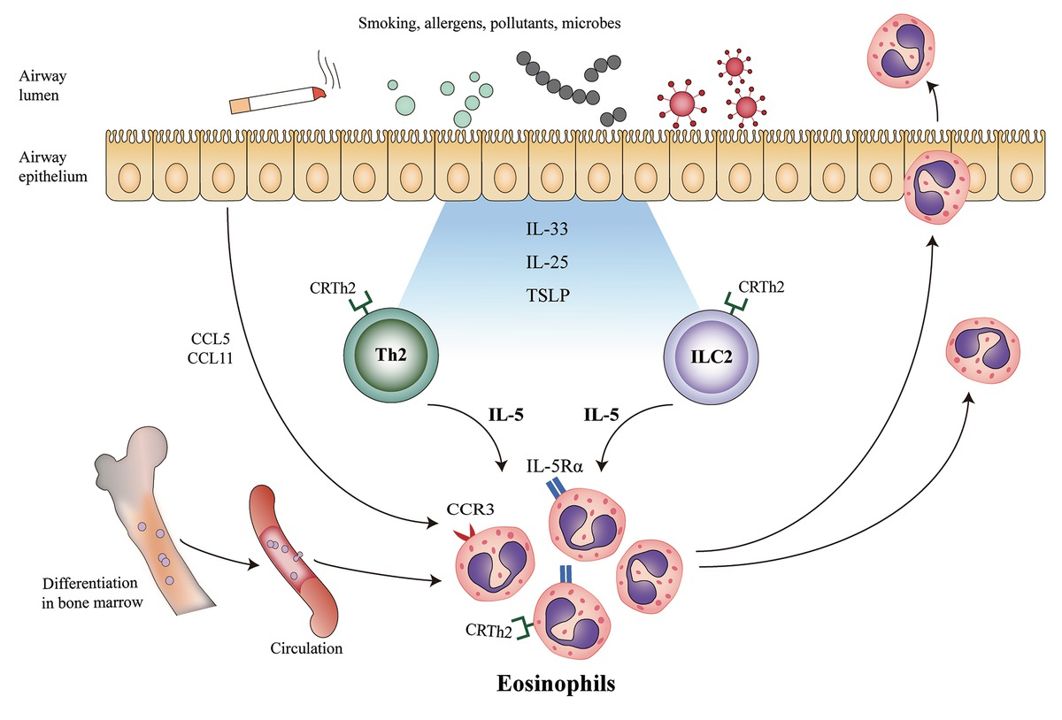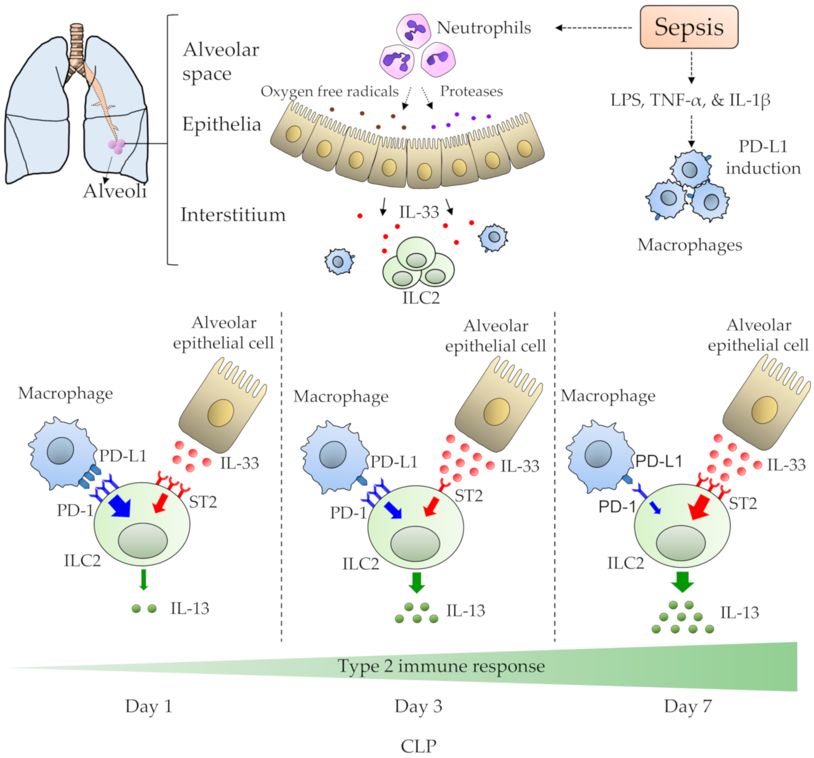Creative Biolabs is a world-leading service provider of application-specific antibody development. Here, we introduce our in vitro diagnostic (IVD) antibody development and immunoassay development services targeting CRTh2 marker. Our state-of-the-art technologies ensure that our clients receive high-quality, stable, flexible, and cost-effective products and services.
Introduction of CRTh2
Chemoattractant Receptor-homologous molecule expressed on T-Helper type 2 cells (CRTH2), also named Prostaglandin D2 receptor 2 (DP2), is a human protein encoded by the PTGDR2 gene. It is a member of the class of prostaglandin receptors which bind with and respond to various prostaglandins. CRTH2 is a G-protein coupled receptor that binds to the ligand prostaglandin D2. CRTH2 is expressed on various cell types including T helper type 2 (Th2) cells, a subpopulation of CD8+ T cells, eosinophils, mast cells, innate lymphoid type 2 cells, and basophils in humans, but not on human Th1 cells.
CRTH2 activation can increase intracellular calcium levels and reduce intracellular cyclic adenosine monophosphate levels. Its activation triggers a diverse of signaling pathways including phospholipase C, phosphatidylinositol 3-kinase, and p38 mitogen-activated kinase. CRTH2 induces intracellular Ca2+ mobilization and chemotaxis in Th2 cells in a Gαi-dependent manner and mediates Prostaglandin D2-dependent cell migration of blood eosinophils and basophils. In vitro studies, as well as animal and human investigations showed that CRTH2 was mainly involved in immunomodulating effects, such as induction of migration, activation, and cytokine release of leukocytes, which is related to allergic, eosinophilic inflammation and asthma. Increasing studies discovered that CRTH2 might also impact on diseases of the central nervous system, kidney, intestine, lung, hair and skin, bone and cartilage, and even in cancer.
 Fig.1 CRTH2 is expressed on various cell types and is involved in inflammatory regulation.1
Fig.1 CRTH2 is expressed on various cell types and is involved in inflammatory regulation.1
CRTh2 Marker of Sepsis
Sepsis is caused by an immune response triggered by an infection. Neutrophils play a critical role in the innate immune response of sepsis, including releasing cytokines, antimicrobial proteins, and phagocytizing invading microbes. Recent research indicated that CRTH2 knock-out mice performed highly resistant to cecal ligation and puncture (CLP)-induced sepsis. This resistance was mechanistically related to lower bacterial load, lower production of proinflammatory cytokines including tumor necrosis factor alpha, interleukin 6 and Chemokine (C-C motif) ligand 3 in peritoneal cavity and blood. And increased neutrophil accumulation based on up-regulation of the chemokine receptor CXCR2 also contributed to the CRTH2 knock-out resistance.
 Fig.2 The connections between ILC2s and sepsis.2
Fig.2 The connections between ILC2s and sepsis.2
Features
To aid in the prognosis and diagnosis of sepsis, Creative Biolabs offers an extensive range of IVD antibody development services against protein C antigens to measure its levels clinically. The features of our services include:
- Expertise: expert in the development of antibodies for different immunoassays (e.g., ELISA, immunohistochemistry, Western blot, immunochromatography assay).
- Experience: years of experience in the IVD field with the completion of numerous IVD-related projects.
- Efficiency: fast turnaround time and competitive pricing.
- Facility: fully equipped facility to perform antigen & antibody conjugation, protein characterization and purification.
Creative Biolabs provides IVD antibody development services against an extensive range of sepsis biomarkers in addition to CRTh2. During antibody development, we work hand in hand with you and your team to ensure project goals and timelines are being met. Contact us to discuss your projects and experience the great value of our expert services.
References
- Cui, Yanan, and Yan Chen. "Blood eosinophils in chronic obstructive pulmonary disease: A potential biomarker." Journal of Translational Internal Medicine 11.3 (2023): 193-197. under Open Access license CC BY 4.0, without modification.
- Akama, Yuichi, et al. "The role of innate lymphoid cells in the regulation of immune homeostasis in sepsis-mediated lung inflammation." Diagnostics 10.10 (2020): 808. under Open Access license CC BY 4.0. The image was modified by extracting and using only part A of the original image.
For Research Use Only.

